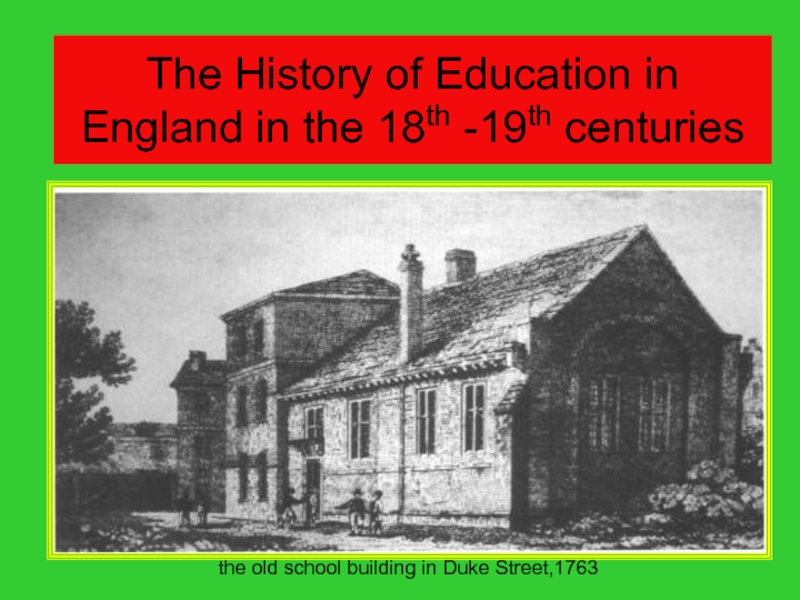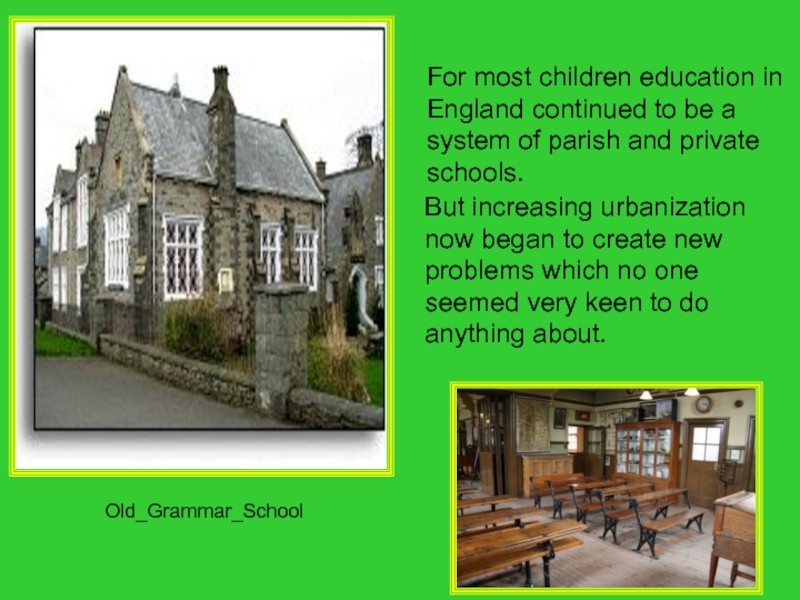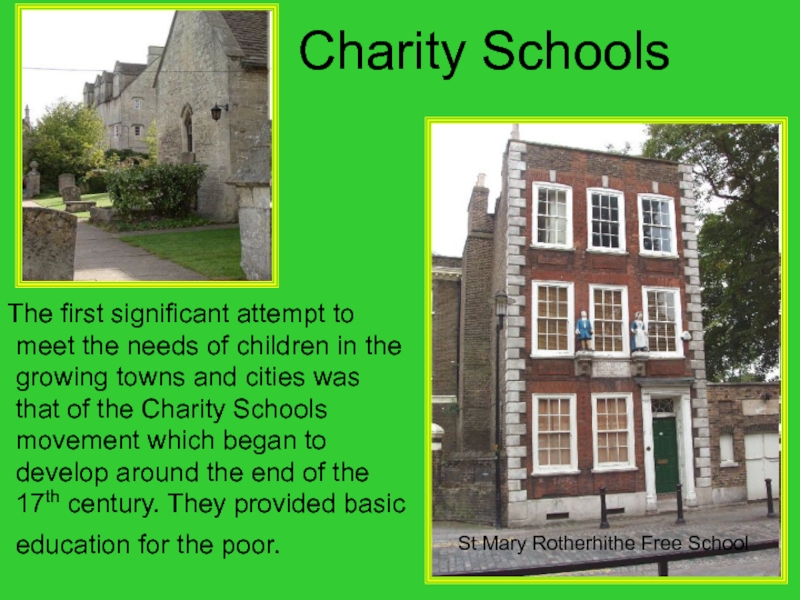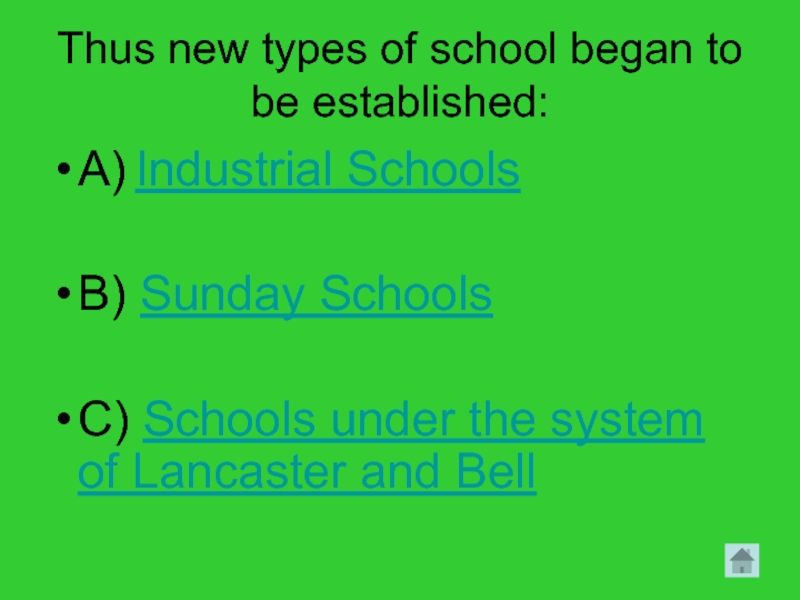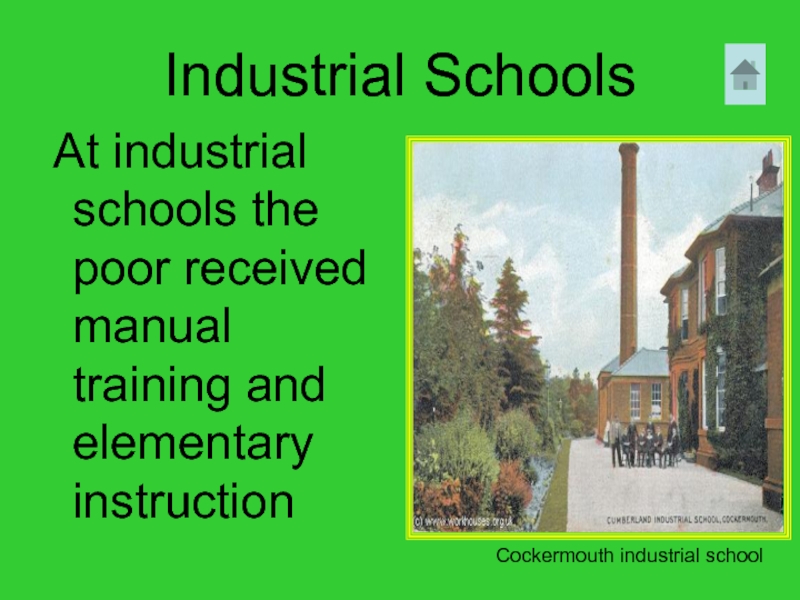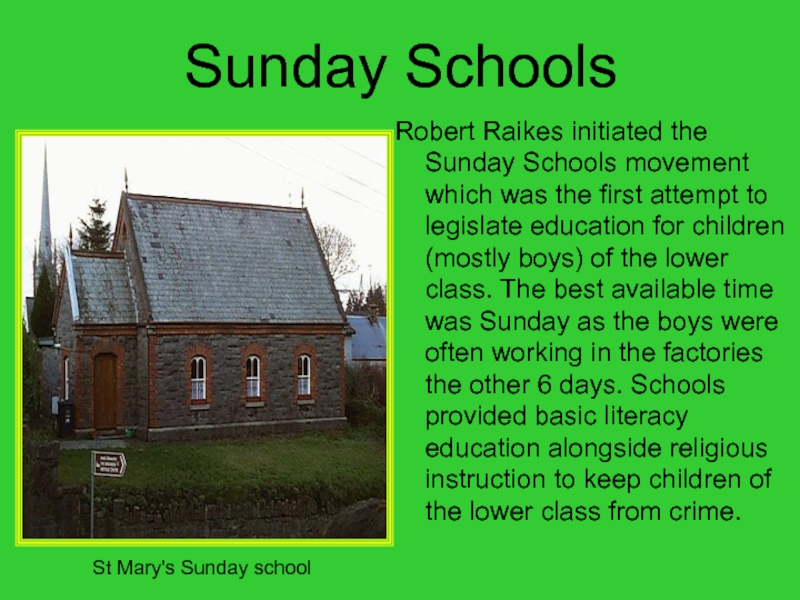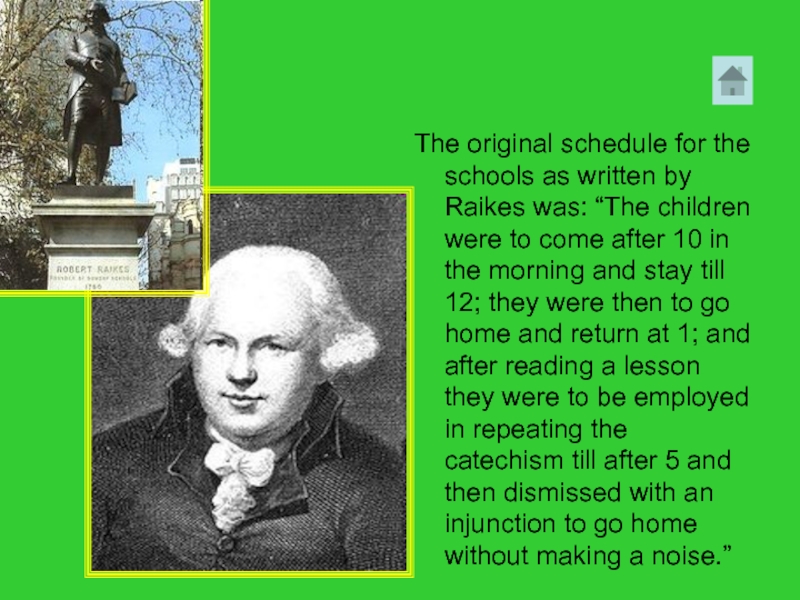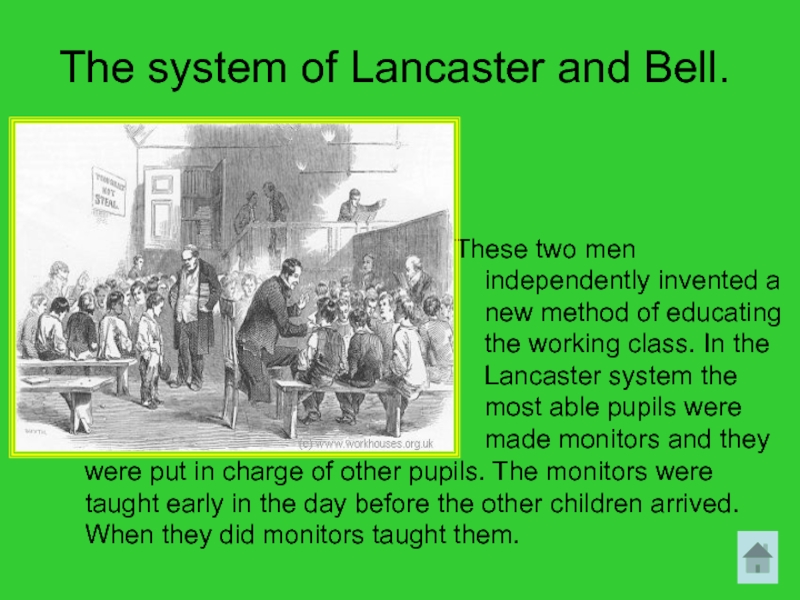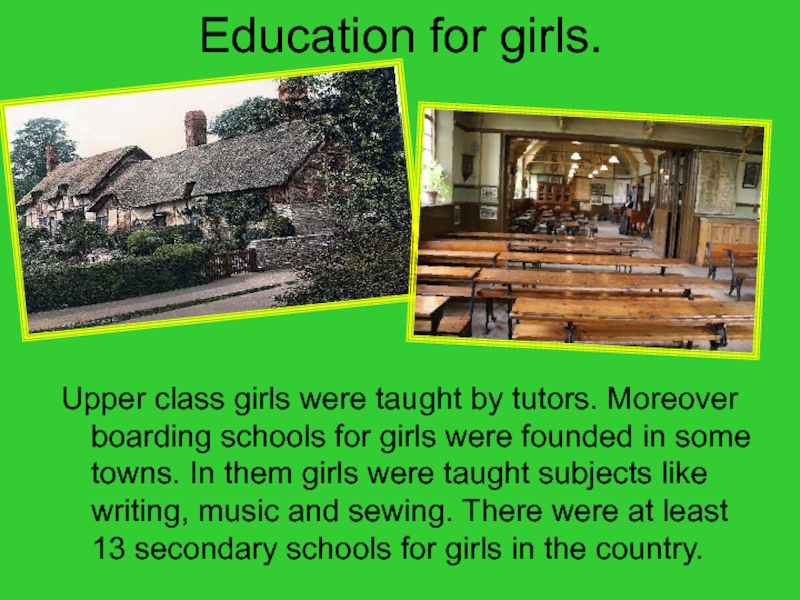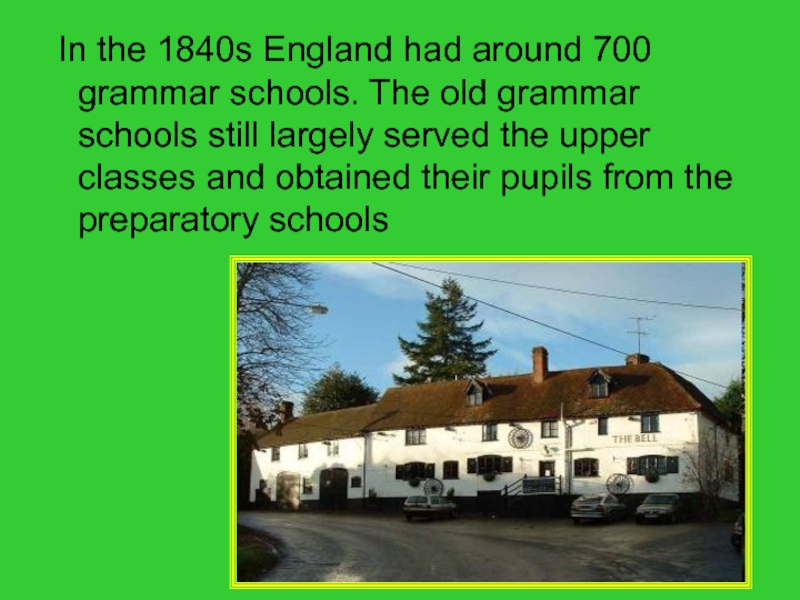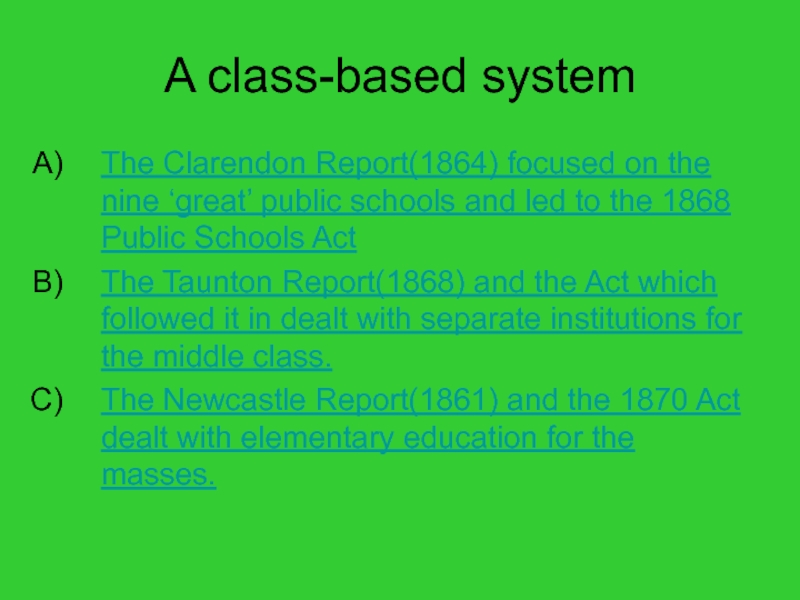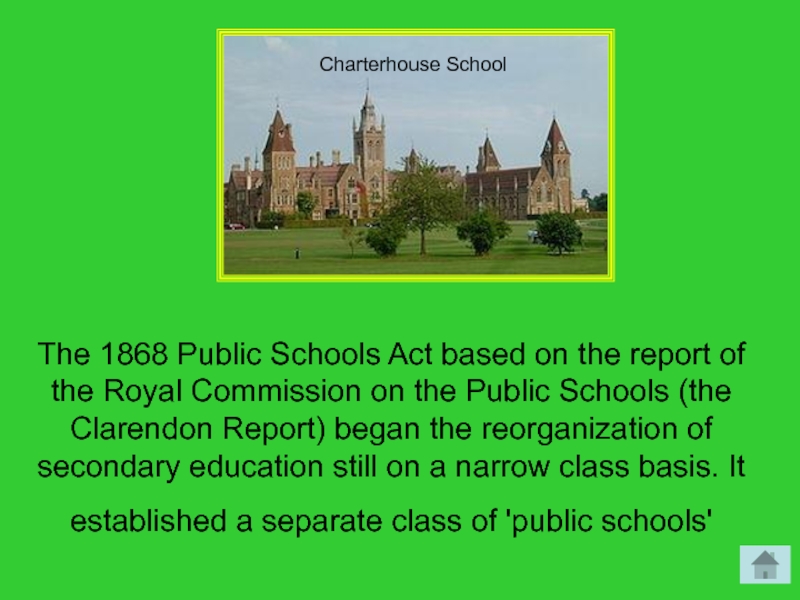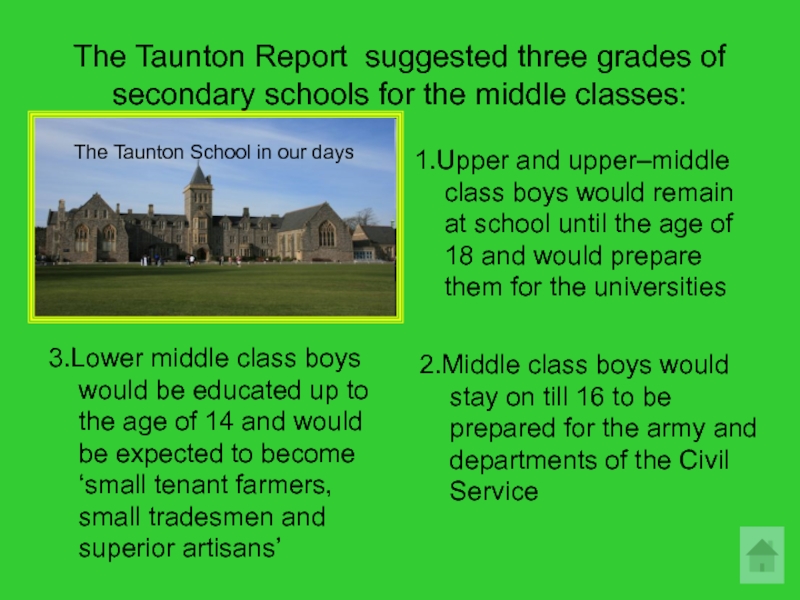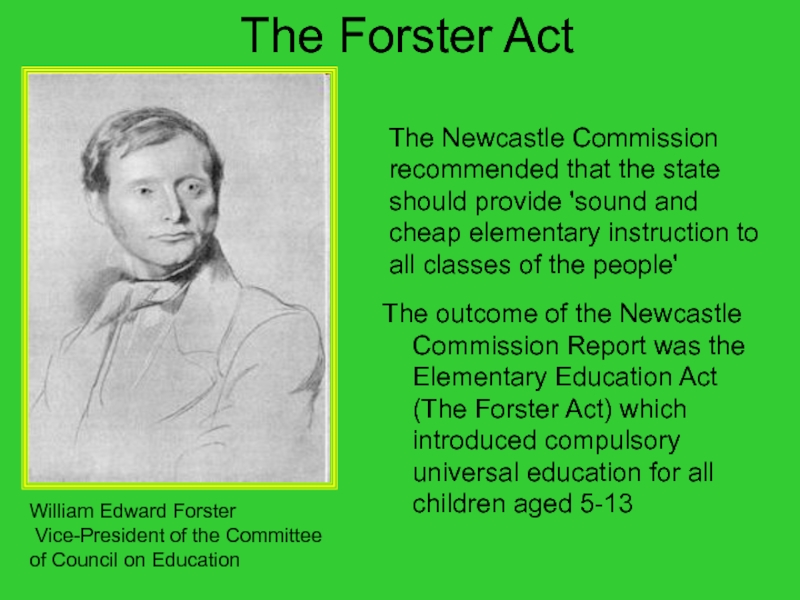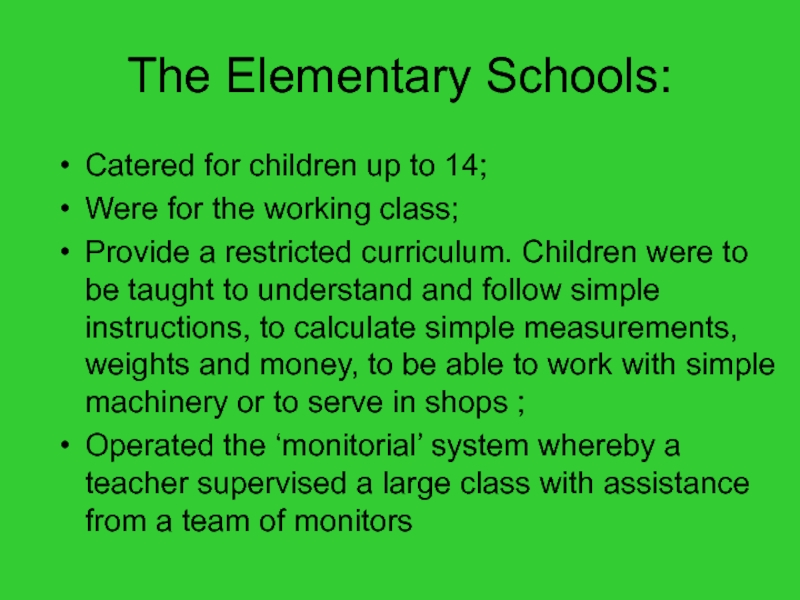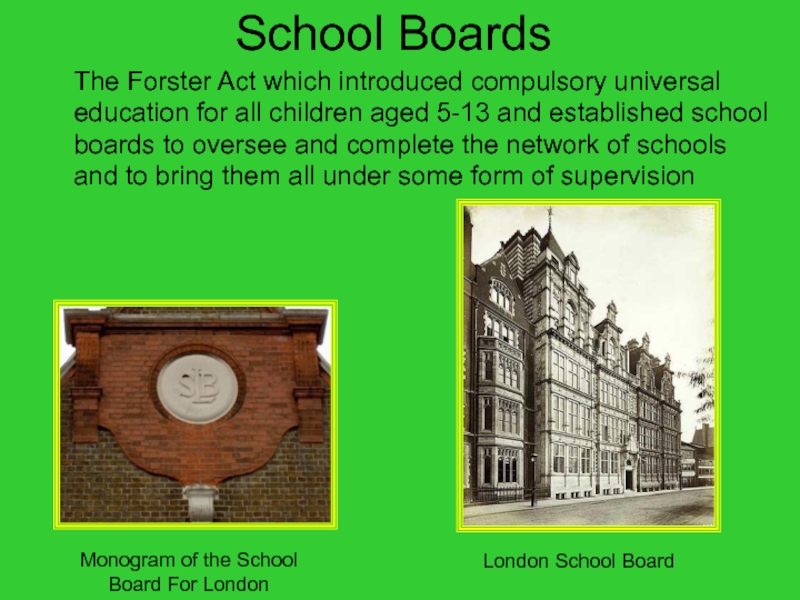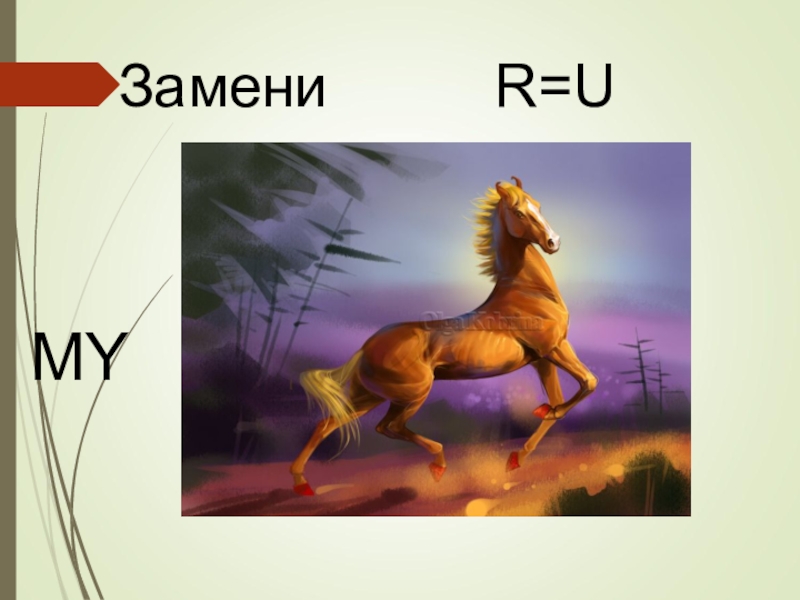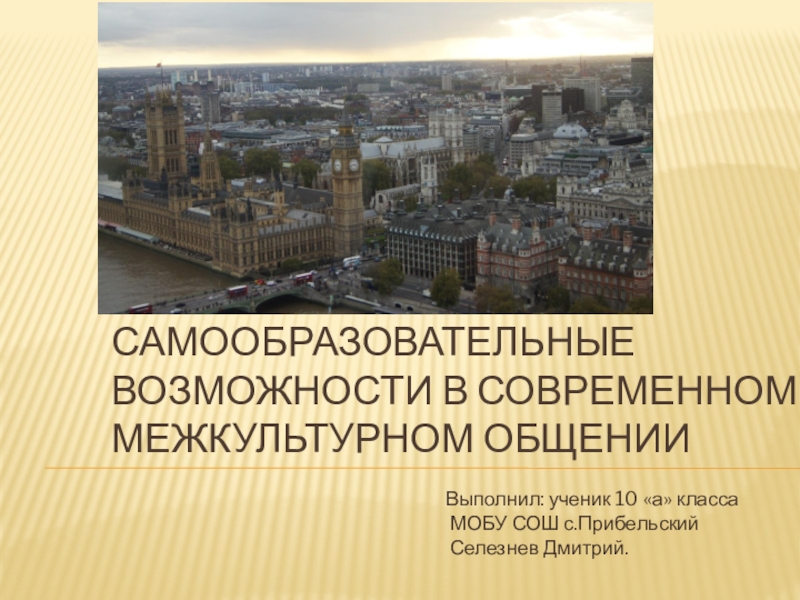the old sсhool building in Duke Street,1763
- Главная
- Разное
- Образование
- Спорт
- Естествознание
- Природоведение
- Религиоведение
- Французский язык
- Черчение
- Английский язык
- Астрономия
- Алгебра
- Биология
- География
- Геометрия
- Детские презентации
- Информатика
- История
- Литература
- Математика
- Музыка
- МХК
- Немецкий язык
- ОБЖ
- Обществознание
- Окружающий мир
- Педагогика
- Русский язык
- Технология
- Физика
- Философия
- Химия
- Шаблоны, фоны, картинки для презентаций
- Экология
- Экономика
Презентация, доклад по английскому языку Образование в Англии. 18-19 век
Содержание
- 1. Презентация по английскому языку Образование в Англии. 18-19 век
- 2. For most children education in England continued
- 3. Charity Schools
- 4. Thus new types of school began to
- 5. Industrial Schools At industrial schools the poor received manual training and elementary instructionCockermouth industrial school
- 6. Sunday SchoolsRobert Raikes initiated the Sunday Schools
- 7. The original schedule for the schools as
- 8. The system of Lancaster and Bell.These two
- 9. Education for girls.Upper class girls were taught
- 10. In the 1840s England had around
- 11. A class-based systemThe Clarendon Report(1864) focused on
- 12. The 1868 Public Schools Act based on
- 13. The Taunton Report suggested three grades of
- 14. The Forster ActThe outcome of the Newcastle
- 15. The Elementary Schools:Catered for children up to
- 16. The Forster Act which introduced compulsory universal
- 17. (:THE END :)
Слайд 1The History of Education in England in the 18th -19th centuries
Слайд 2For most children education in England continued to be a system
But increasing urbanization now began to create new problems which no one seemed very keen to do anything about.
Old_Grammar_School
Слайд 3 Charity Schools
The first significant
St Mary Rotherhithe Free School
Слайд 4Thus new types of school began to be established:
A) Industrial Schools
B)
C) Schools under the system of Lancaster and Bell
Слайд 5Industrial Schools
At industrial schools the poor received manual training
Cockermouth industrial school
Слайд 6Sunday Schools
Robert Raikes initiated the Sunday Schools movement which was the
St Mary's Sunday school
Слайд 7
The original schedule for the schools as written by Raikes was:
Слайд 8The system of Lancaster and Bell.
These two men independently invented a
were put in charge of other pupils. The monitors were taught early in the day before the other children arrived. When they did monitors taught them.
Слайд 9Education for girls.
Upper class girls were taught by tutors. Moreover boarding
Слайд 10 In the 1840s England had around 700 grammar schools. The
Слайд 11A class-based system
The Clarendon Report(1864) focused on the nine ‘great’ public
The Taunton Report(1868) and the Act which followed it in dealt with separate institutions for the middle class.
The Newcastle Report(1861) and the 1870 Act dealt with elementary education for the masses.
Слайд 12The 1868 Public Schools Act based on the report of the
Charterhouse School
Charterhouse School
Слайд 13The Taunton Report suggested three grades of secondary schools for the
1.Upper and upper–middle class boys would remain at school until the age of 18 and would prepare them for the universities
3.Lower middle class boys would be educated up to the age of 14 and would be expected to become ‘small tenant farmers, small tradesmen and superior artisans’
2.Middle class boys would stay on till 16 to be prepared for the army and departments of the Civil Service
The Taunton School in our days
Слайд 14The Forster Act
The outcome of the Newcastle Commission Report was the
William Edward Forster
Vice-President of the Committee of Council on Education
The Newcastle Commission recommended that the state should provide 'sound and cheap elementary instruction to all classes of the people'
Слайд 15The Elementary Schools:
Catered for children up to 14;
Were for the working
Provide a restricted curriculum. Children were to be taught to understand and follow simple instructions, to calculate simple measurements, weights and money, to be able to work with simple machinery or to serve in shops ;
Operated the ‘monitorial’ system whereby a teacher supervised a large class with assistance from a team of monitors
Слайд 16The Forster Act which introduced compulsory universal education for all children
School Boards
Monogram of the School Board For London
London School Board
